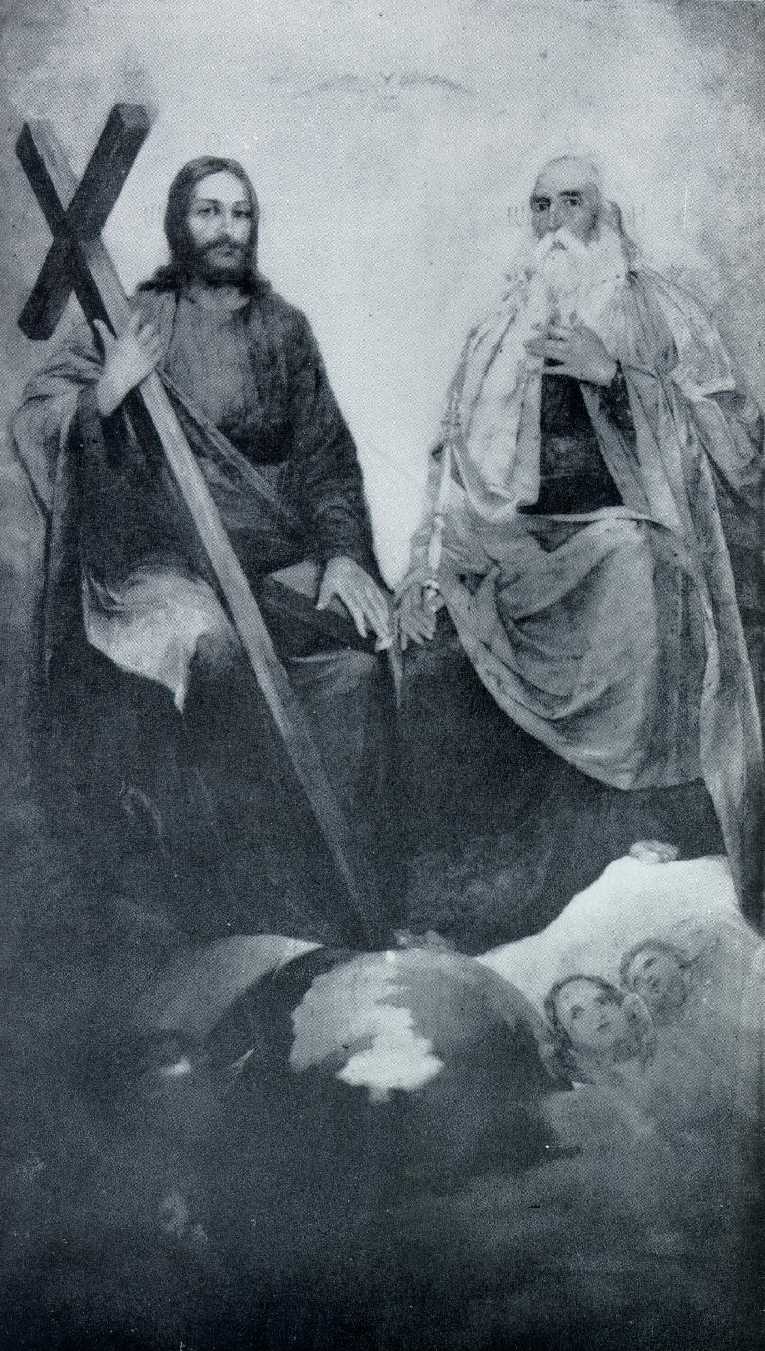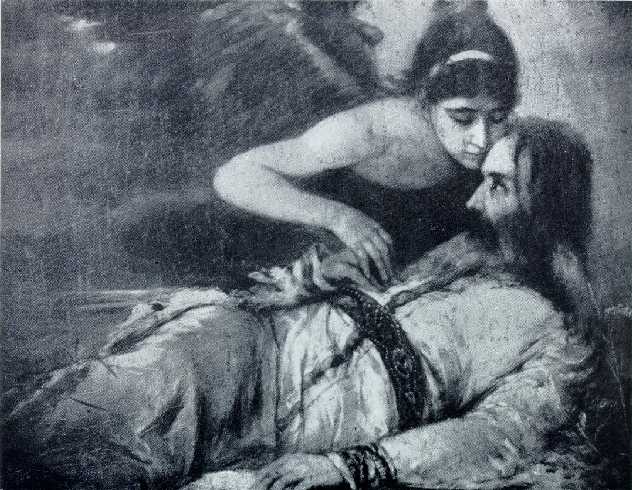

PRESENTATION OF THE VIRGIN IN THE TEMPLE, THE ICONOSTASIS OF THE CATHEDRAL, DJORDJE KRSTIĆ, 1885-1886
More than a hundred years ago, Djordje Krstić was standing in front of the iconostasis in Niš, occupied by the same dilemma. He solved it in such a way that we are still honoring him. His icons for the iconostasis of the Niš Cathedral were neither understood by the majority of contemporary artists nor accepted by the church at that moment. He was reprimanded that these were not the faces of our saints, but of the common girls from the streets of Niš. Only Mihailo Valtrović understood and defended him. It is particularly important because M. Valtrović was a follower of the idea that "pictures should be painted according to the apprehension and importance given by the church" and that the churches should be decorated "in the ecclesiastical spirit".

HOLY TRINITY, THE ICONOSTASIS OF THE CATHEDRAL, DJORDJE KRSTIĆ, 1885-1886
However, financial means represented a great problem then, just as they do nowadays. Russia was helping as much as it could: "the great related nation from the distant country sent us the gift without which our restored churches would have been totally naked inside" - Sergej Nikolić wrote in the middle of the 19th century.
A great number of churches is being constructed lately in all the Serbian regions, some of them amazingly beautiful. Yet, their interiors most often remain white. Paintings have the meaning of an open heaven of glory and benefit both to those who know the history of our fresco painting and to those who are simply the true believers or curious visitors. How to reach the divine heights and the blessing of Christ's thought in our temple without frescoes? White and bare walls may not be hidden behind any excuse, even if it be of the material nature.

DEATH OF CZAR LAZAR, DJORDJE KRSTIĆ, 1885
There are great artists among us Serbs. It is confirmed by the famous temples frescoed during the past centuries. The knowledge of ancient fresco painters had been transmitted from generation to generation, and it represents a part of the knowledge of our contemporary painters. Hence, it is not true that our ecclesiastical painting has got retarded in its development during several previous decades. Even then, it was developing, changing and adapting to the political and social conditions, like all the other artistic disciplines, so that the fresco painting of the 20th century can be clearly distinguished from the painting of any other century. It surely is a product of particular social and historical circumstances.
The statement that the church restricts the development of our art of painting also has no grounds. In the world history of art, in all the nations and all the epochs, religion was a source of inspiration and a promoter of artistic creation. There is no reason whatsoever for our church to move astray from this cultural continuity now, at the end of the second millenium.
Our ecclesiastical fresco painting has to comply with the requests of science, beauty and church itself. In this respect, a religious excitement has to be a part of the source of inspiration to a modern painter. The best way would be the research and knowledge of our old art of painting, which abounds in visual-art elements and in religious contents. The idea, the drawing, the color - all of them have to be applied in a purely Orthodox spirit.